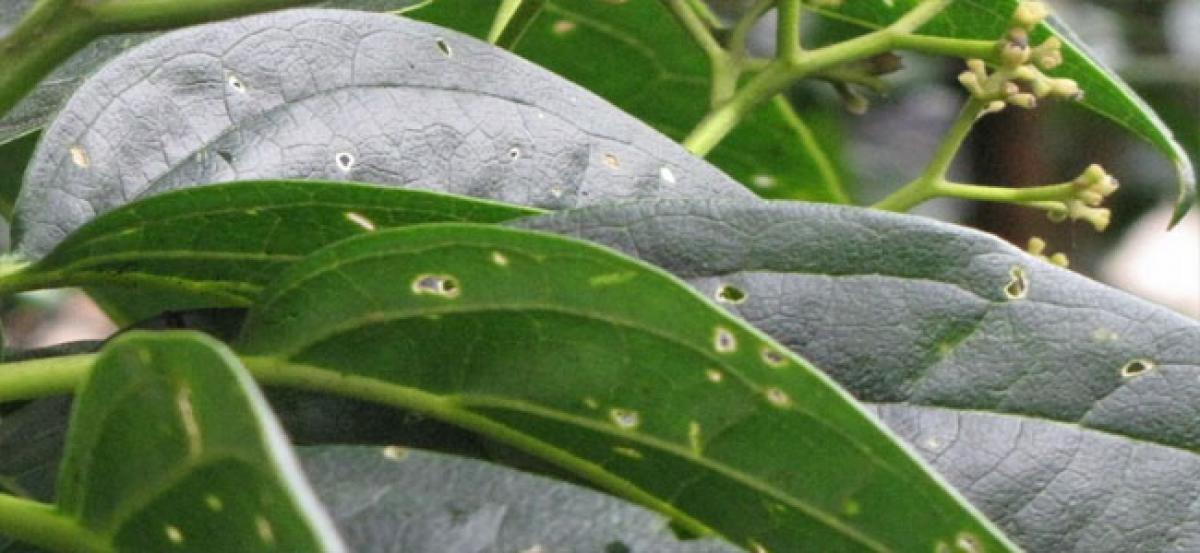Live
- Public outrage in Jharkhand's Giridih over murder, police station gheraoed
- Santosh Trophy: Meghalaya edge Goa 1-0 to secure QF berth
- Army's swift action prevented Kolkata fire from spreading: Defence Ministry
- State Police tried to murder Ravi- Union minister
- FDI flow into India from Gulf countries surges to $24.54 bn in 12 years
- BBL: McSweeney hits fiery 78 to guide Heat to thrilling win after Australia snub
- 'Exceptional case..': Delhi HC orders revision of CLAT-2025 results
- South Korea reports new avian influenza case at regional farm
- US egg prices soar to yearly high amid bird flu, holiday demand
- Ayushman Bharat proving to be boon for people in Gujarat's Kheda
Just In

Over a century after it was first documented and feared to have gone extinct, a rare plant species that contains anti-carcinogenic properties has been rediscovered by a forest officer in Assam. Popularly known in Assamese as Gandheli, the plant species, Nothapodytes nimmoniana, was rediscovered by Forest Officer Jatindra Sarma recently in the Borjan area in eastern Assam\'s Tinsukia district.
Guwahati: Over a century after it was first documented and feared to have gone extinct, a rare plant species that contains anti-carcinogenic properties has been rediscovered by a forest officer in Assam. Popularly known in Assamese as Gandheli, the plant species, Nothapodytes nimmoniana, was rediscovered by Forest Officer Jatindra Sarma recently in the Borjan area in eastern Assam's Tinsukia district. The plant was first documented by botanist UN Kanjilal in 1914. Its occurrence was last mentioned by Kanjilal in his book "Flora of Assam", published in 1934.
"The plant is the richest source of Camptothecin and it is the world's third-most important plant-based bio-molecule for treating ovarian and colon cancers, besides its use against HIV virus," said Sarma, adding that he and his team had undertaken several botanical explorations before confirming it to be the plant.
"The plant species possesses various bio-active substances like Camptothecin, an anti-cancer alkaloid," said Sarma, who recently published "Medicinal Plants and Mushrooms of India with Special Reference to Assam". The book has documented close to 1,400 medicinal and aromatic plant species as well as wild mushrooms that are found in abundance in the wilderness of Assam, with a special focus on their medicinal properties. He said that the plant, which belongs to the family of icacinaceae, is a small tree largely found in tropical America and in parts of China and Sri Lanka.
"In India, it is found in the western parts of the country in the Nilgiri mountains and Mysore. Due to over-collection and massive destruction of habitat, the species was declared endangered," Sarma He said that Camptothecin found in Gandheli is a new class of chemotherapeutic agent which has special cytotoxic properties that damage cancel cells. "Experiments carried out across the globe have established the links of Camptothecin to cancer cure," he said, adding that at present China meets the global demand for Camptothecin.
Among the other rare herbs and plants with medicinal properties recorded in Sarma's book is Ophiorrhiza mungos L., popularly known as Neuli in Assamese, or the Mongoose Plant in English. While the root of the plant is used as a bitter tonic to treat hydrophobia, cancer and leprosy, recent research has established the presence of the alkaloid Camptothecin in this plant as well.
Another such plant is Ophiorrhiza rugosa L., which too has Camptothecin. The root of Ophiorrhiza rugosa L. is used to treat ovarian cancer, colon cancer as also AIDS. Leaf paste is used as poultice for the treatment of arthritis. "Garcinia cowa Roxb, known as Kau thekera in Assamese, is another such plant which is included in the book. Both the fruit and leaves have medicinal properties. While the fruit has anti-dysenteric properties, the leaves have anti-malarial properties," Sarma said.
According to him, recent research has established the presence of two major compounds -- Xanthones and Phloroglucinols -- in the plant and they are believed to have anti-cancer, anti-inflammatory, anti-viral, anti-bacterial, anti-fungal, anti-HIV, anti-depressant and anti-oxidant properties.

© 2024 Hyderabad Media House Limited/The Hans India. All rights reserved. Powered by hocalwire.com







